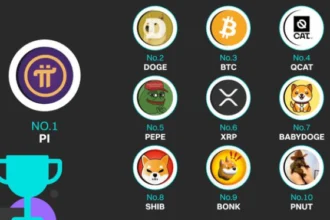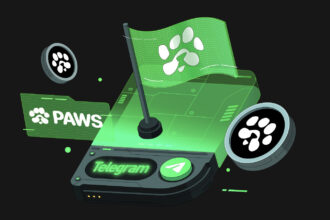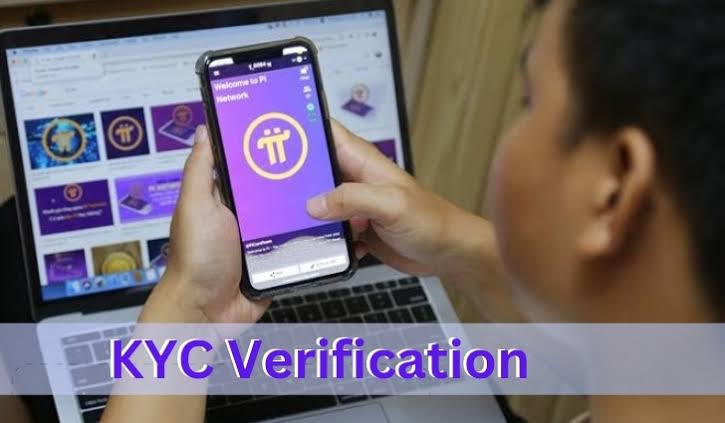Since its inception, Pi Network has gained significant attention for its unique mobile mining concept, allowing users to earn Pi tokens by simply tapping on their phones daily. Unlike traditional cryptocurrencies, which require complex computational power for mining, Pi is accessible to anyone with a smartphone, making it appealing to a broad audience. As the network prepares for its Open Network launch, which will allow Pi tokens to be traded on external exchanges, many miners are interested in understanding their options for selling their mined Pi before the official launch.
Currently, the Pi Network is in the “Enclosed Mainnet” phase, which restricts the movement of Pi tokens outside of its ecosystem. However, Pi holders have explored creative ways to exchange their tokens for goods and services within the network, despite the lack of direct trading opportunities. This article provides an overview of the different ways to sell or trade mined Pi before the Open Network launch, along with the risks and rewards associated with each approach.
1. Understanding the Enclosed Mainnet and What It Means for Trading
To understand the limitations on selling Pi, it’s important to know what the Enclosed Mainnet phase entails. In this phase, users can only transact within the Pi Network ecosystem, meaning that Pi tokens cannot be transferred to external exchanges or wallets. While this restricts traditional buying and selling of Pi, the Pi Core Team allows limited trading within Pi’s internal ecosystem, enabling users to exchange their tokens for goods and services on Pi marketplaces and applications.
The goal of the Enclosed Mainnet phase is to help the network develop a strong ecosystem of applications and marketplaces that use Pi tokens as a native currency. This step is intended to build real utility and demand for Pi before its broader release to external exchanges and the open market. Until this phase concludes with the Open Network launch, selling Pi in traditional crypto marketplaces remains restricted. However, there are options available for users who wish to exchange their Pi tokens within the existing ecosystem.
2. Selling Pi on Pi Network Marketplaces
Pi Network has a growing ecosystem of internal marketplaces that facilitate transactions using Pi. These marketplaces allow users to trade Pi for goods and services provided by other users, effectively providing a way to “sell” Pi in exchange for value without requiring external exchanges.
Key Marketplaces to Explore
- Pi Chain Mall (PCM): One of the most popular marketplaces within the Pi Network, Pi Chain Mall allows users to buy and sell a range of products using Pi tokens. Users can list items such as electronics, clothing, and even digital services, with prices set in Pi. This marketplace operates within the network’s restrictions, making it a legitimate way to exchange Pi tokens for goods and services.
- Pi Barter Mall: Similar to Pi Chain Mall, Pi Barter Mall offers a marketplace where users can trade goods using Pi tokens. The platform hosts a variety of products, from household items to luxury goods, and allows for easy transactions within the network.
- Pi Business Platforms: Several business-focused platforms on Pi Network enable users to exchange services for Pi. These platforms are an option for professionals who want to “sell” Pi by offering services such as graphic design, writing, or coding in exchange for tokens.
Steps for Selling Pi in a Marketplace
- Join a Verified Marketplace: Access these marketplaces through the Pi Browser or official Pi apps to ensure you’re using legitimate, Pi-approved platforms.
- List Items or Services: If you have items or skills to offer, list them on these marketplaces with a clear description, price in Pi, and any necessary contact information for the transaction.
- Negotiate and Complete the Trade: Communicate with interested buyers through the platform’s messaging tools, agree on the terms of the exchange, and proceed with the transaction once both parties are satisfied.
- Use Escrow Services if Available: Some platforms may offer escrow services to protect buyers and sellers, ensuring that Pi tokens are only transferred once the goods or services have been received.
3. Peer-to-Peer (P2P) Transactions
Another option for selling Pi before the Open Network launch is through peer-to-peer (P2P) transactions. Many Pi users have turned to P2P trading within Pi’s community groups or social media channels to find buyers for their tokens in exchange for goods, services, or other digital currencies. Although P2P transactions carry some risk, they can be a convenient way to trade Pi directly with other users.
How to Conduct a P2P Transaction Safely
- Join Trusted Community Groups: Many Pi Network community groups, particularly on social media platforms like Telegram, Facebook, or Reddit, have active members interested in P2P trades. Only join groups with a good reputation and strong moderation to reduce the risk of scams.
- Vet Potential Buyers/Sellers: To avoid potential scams, only transact with verified users or those with good reputations within the community. Some groups require participants to complete KYC (Know Your Customer) verification, providing added security for transactions.
- Agree on Exchange Terms: Clearly outline the terms of the trade, including the price, exchange rate, and any conditions. Both parties should be fully transparent and agree on all aspects before proceeding.
- Use Escrow Services if Available: Some P2P groups offer escrow services managed by trusted moderators, which hold the Pi tokens or other digital assets until the transaction is complete. This reduces the risk for both parties and ensures fair trade.
- Complete the Exchange and Confirm Receipt: Once the transaction is agreed upon, transfer the goods, services, or assets as specified. Confirm receipt with the other party to finalize the trade.
4. Exchanging Pi for Digital Services or Vouchers
Several Pi users have also explored using their Pi tokens to buy digital services, online subscriptions, or gift cards from within the Pi community. Some users may offer vouchers or services, such as prepaid gift cards, phone credits, or other digital resources, which can be exchanged for Pi tokens.
This form of exchange may not provide direct cash value but still offers utility, as users can use Pi to access services they would otherwise pay for in cash. However, ensure that any such exchanges are conducted with reputable vendors and follow the community guidelines to avoid fraudulent activities.
5. Understanding the Risks and Limitations
While there are legitimate ways to exchange Pi tokens for value within the Pi ecosystem, users should be aware of the associated risks and limitations:
- Scams and Fraud: Due to the unregulated nature of P2P and community-based transactions, scams are a potential risk. Always transact within verified groups, use trusted moderators, and follow best practices to avoid fraud.
- Limited Liquidity: Because Pi is currently restricted to the Enclosed Mainnet, liquidity is limited, meaning users may not be able to find buyers or achieve the desired trade value for their Pi tokens.
- No Official Fiat Conversion: Pi Network has not officially sanctioned any fiat currency exchanges, and converting Pi to cash remains unavailable until the Open Network launch. Any attempts to do so carry a high risk and may be against Pi Network’s policies.
- Potential Policy Changes: Pi Network’s guidelines may evolve as the project moves closer to Open Network, which could affect the availability of internal marketplaces or P2P transactions. Staying informed about Pi’s official policies and community updates is crucial.
6. Preparing for the Open Network Launch
The upcoming Open Network launch promises to open up new opportunities for trading and liquidity as Pi becomes available on external exchanges. To maximize the value of your mined Pi upon the launch, consider the following steps:
- Stay Engaged with the Pi Community: By staying active and engaged within Pi’s ecosystem, you can stay updated on the latest developments, Open Network launch plans, and new marketplace applications. Being part of the community can also help you build valuable connections for future trading opportunities.
- Complete KYC Verification: Pi Network’s KYC process is critical for users to transition their tokens to the Open Network. Ensure that you complete the KYC verification to be eligible to trade Pi on external exchanges upon launch.
- Consider Holding for Long-Term Value: For those who believe in Pi Network’s vision, holding Pi tokens for the long term may provide greater value than selling immediately upon launch. As the ecosystem matures, Pi’s real-world utility and adoption could potentially enhance its value.
Conclusion: Is Selling Pi Before the Open Network Launch Worth It?
While Pi Network’s Enclosed Mainnet phase limits traditional trading options, users can still sell or exchange Pi within the ecosystem through legitimate marketplaces and P2P transactions. For those who need immediate value, these options offer a way to utilize Pi tokens for goods and services. However, each approach carries unique risks and requires careful consideration to ensure safety and fair trade.
As the Open Network launch approaches, many users are also choosing to hold their mined Pi tokens in anticipation of increased value and broader trading opportunities once external exchanges become accessible. Ultimately, the decision to sell or hold Pi depends on each user’s personal goals and risk tolerance. With a clear understanding of the available options, Pi Network miners can make informed choices about how to maximize the value of their tokens before and after the Open Network launch. Continue Reading
















